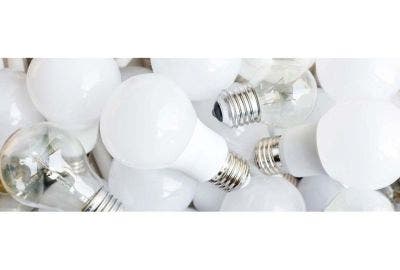Light is an integral part of sight and there is an undeniable link between the two. The visual ability of a human is the direct result of the complex interaction between light and our eyes. Without light, there would be no sight; but not all light is the same. Therefore, the light that you choose to live under will make a big difference. It is incredibly important that we choose the light that will benefit our vision and wellbeing the most.
Different Types of Light
Each wavelength of light is perceived by our eyes as a different colour. The shorter wavelengths of visible light are violet. As the wavelengths get longer, the visible light changes colour to blue, green, yellow, orange and finally red, which is the longest wavelength.
Most light that we use (like sunlight or light from a bulb/lamp) is a mixture of all the visible light wavelengths. This is called white light. When it is mixed, it is difficult for us to separate the colours out and so, like its name, we see the light as white.
What is Blue Light?
Blue light is a component of light present in the normal, visible spectrum. It has very short wavelengths at around 400 to 500 nanometers. In comparison, red light is around 635 to 700 nanometers. Due to its shorter wavelengths, rays on the blue end of the spectrum have more energy than those with longer wavelengths.
The human eye is not very good at blocking out blue light and so exposure to large amounts of focused blue light can be harmful to the eyes. Too much exposure to blue light can damage light sensitive cells in the retina; this can lead to the acceleration of macular degeneration, which in turn can lead to permanent vision loss.
Studies have shown that it is possible that blue light can contribute to eye strain. Because of its short wavelengths, high energy blue light scatters more easily than other visible light and so it is not as easily focused. This unfocused light reduces contrast and can contribute to digital eye strain.
Because of this, light has a very important role when it comes to our vision and wellbeing and it is increasingly important to choose a light that will contribute positively to both of these things.
Are there any Lamps that are Close to the Daylight Colour Spectrum?
Serious Lights offer a range of lamps that have your vision and wellbeing in mind. These lamps offer a colour spectrum closest to that of real indoor daylight to ensure perfect contrast and reduced eye-strain. This is thanks to their >98 CRI which gives your eyes the light that is healthiest for them.
The optimum colour temperature for concentration indoors is 4,000K, according to Alex Pratt of Serious Readers, and this is what Serious Lights work to. This colour temperature provides less blue light than that from LED or fluorescent lamps as seen in the diagrams below.

The light beam projected by Serious Lights is designed to mirror the indoor daylight our eyes find best to concentrate under, in order to:
- Maximise the perception of detail, colour and contrast to allow you to see in higher definitions.
- Minimise the risks of damage and discomfort to the eye. No extra, unnecessary blue light output means a reduction in eye damage risk, thanks to the lamp’s balanced natural mix of colours in the spectrum.
- Optimise well-being and avoid unnecessary interference with sleep patterns, thanks to the reduction in blue light output.





















